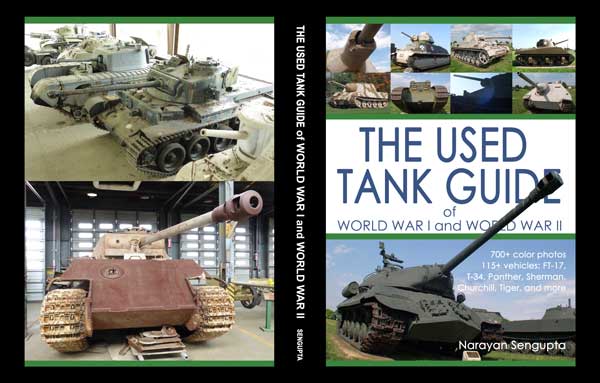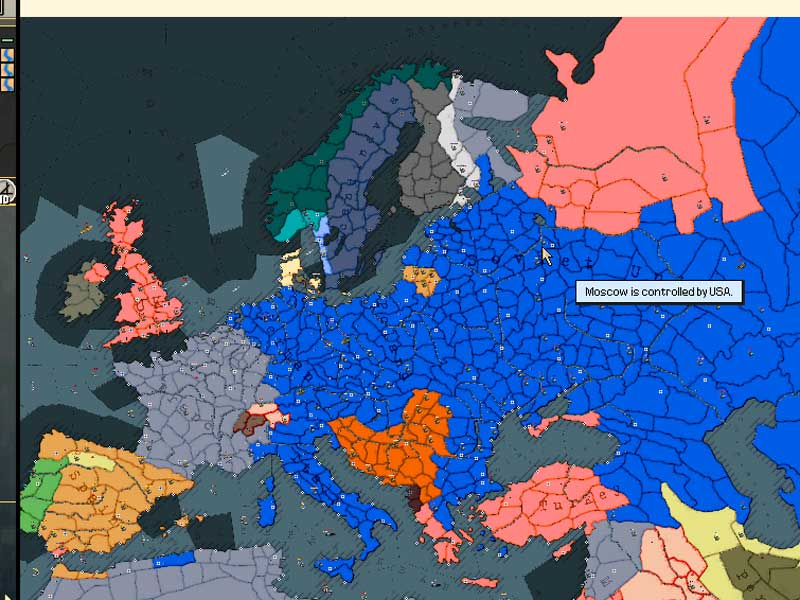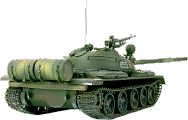Introduction
While I am not to be confused with the better players of Strategic Command, I have learned a great deal from my many losses, and received tips on several things that have improved my play. Naval strategy is among my favorite aspects of war games, and I had much to learn when I began playing online 3 months ago. I wish the North Atlantic were larger and the navy more important to supplies in Strategic Command, but the game can be greatly influenced by who controls the oceans and seas. There are many aspects of naval warfare in Strategic Command that I found out the hard way, and with so many new players recently joining the TCP/IP games, I thought I would offer some ideas for the newer players on naval engagements and positioning. If some more experienced players find mistakes or errors, please post them for the benefit of those learning the game. - Tim Bollier (Leopard), August 22-27, 2003
Strategic Command's Naval Strategies
- Try to have the naval engagement near your land based air support. If this isn't possible, move your air near the expected battle. This could mean operating UK air to Alexandria or German air to Tobruk, along with HQ for support. Determine the strike range of your air and your opponents, and position your navy accordingly.
- Use transports of corps strategically as you would destroyers, with a 10+ strength corps. It is gamey, but it is used so you may as well use it also. While a transport has no attack value, they can spot, provide a surprise bonus if they intercept an enemy ship, provide "cannon fodder" to reduce attacks on more expensive naval units, be used in naval blockades (handy in the Med. and Baltic) or to surround a wounded enemy ship to prevent escape (or surround a friendly ship to protect). The transport also threatens with its primary function when in the Med. and Baltic: to deliver troops. Often, your opponent will attack the cheap corps on the transport, leaving a much juicier naval target alone.
- Use your subs in common sea and ocean lanes. Stay away from enemy air. Use natural choke points, such as Gibraltar, Istanbul, Stockholm, Scapa Flow and Copenhagen to position subs near. With their stealth (spotting –1) and surprise bonus, a sub can deliver 100-150 MPP in damage while taking less than 50 MPP damage on many surprise encounters. You will be often be sitting pretty for a counter-attack, especially if you keep some air or naval units close enough to respond.
- Subs are incredibly stealthy if no air units are near. They have a minus one bonus to spotting range and almost impossible to detect before a surprise bonus encounter. So stay away from air units and ports, which belie your positions to the enemy. Adjacent land units 1 hex away can spot subs also.
- The German U-boats are most valuable by remaining alive. The longer the UK and French fleets are hunting for them the better, because afterwards they will begin massing for attacks on the Northern European coast, the Mediterranean, or the Baltic. Unless you have an opportunity to sink a UK warship, avoiding destruction is often a better strategy than raiding, damaging a UK ship, or sinking a French ship. Long-term survival is unlikely, but if the Allies are still hunting for you in 1940, you are getting value out of your U-boats.
- Pre-emptive strikes are common against the Italian, USSR and US navies. The restricted first turn attack on majors is for no naval landings: first turn attacks on a navy are allowed. As they enter the war, consider operating some air units to provide spotting, air defense, and attack capabilities. This serves as a deterrent until your fleet has been secured. As the aggressor, do this before the expected battle so that your air is available for immediate use. Pre-planning could possibly include an HQ in some theatres such as the Med.
- Axis ships are not as expendable as UK ships. Don't waste valuable MPP shelling Malta or taking on the entire British fleet. Fight the UK in smaller battles with air support. The UK begins with an impressive 3 carriers, 2 cruisers, and 6 battleships. Their locations are often unknown due to FOW and the vastness of the seas, and all 11 ships may be within striking range of that one tempting transport which has been placed within your spotting range as bait. Don't bite before scouting.
- Establish fleets. Don't use 1-2 ships independently. The UK can occasionally get away with this in the Atlantic, but the smaller nations cannot afford the risk. Smaller navies should try and defend seas or remote oceans. As Axis, leave the North Atlantic to the UK early.
- Be prepared for a paradigm shift as the Allies if the Italian fleet breaks out. The naval balance can become changed rapidly against you if you are engaged west of France and Spain, where the experienced and possibly tech-advanced Italian Navy and Atlantic U-boats can team with experienced German airfleets from France or Spain, often long-range and plentiful by that stage of the war. You will be beyond your land based air reconnaissance and support. Even with the US fleet, the naval battle is one the Allies simply cannot afford to lose. Unless naval victory is assured, the East Central Atlantic is not the best location for the Allies to be engaged in.
- The 2 French Cruisers and the UK Cruiser make a good U-boat hunting task force. They have range and punch, and if they travel 2 hexes apart, can sweep an area of 77 (11x7) hexes per turn (movement of 9, one hex on each end for 11, and a 7 hex cross coverage. Many players prefer to attack the subs with Carriers or Battleships for the experience, but the French fleet is expendable and therefore good to use as hunters. Cruisers also make excellent ships for quick responses with their range, and have more value in blue water (oceans) than in a sea.
- Use the UK battleships to attack land units along the coast during the Battle of France. Repairs are delayed or often ignored by the better players. A lost UK Battleship is often worth the damage and experience loss of the German airfleets that sink it.
- Move the Med. Carrier (Ark Royal) to join the other 2 UK Carriers, even if you wish to defend the Eastern Mediterranean. You can move the Valiant (Gibraltar Battleship) to replace it if you want. But the UK Carriers are far more valuable as a group with mutual defense.
- The Med. naval war is important enough for some players that they send the whole mother lode of UK ships to fight. But beware! Once Germany knows the location of a majority of the UK fleet, the UK situation in the North Atlantic can rapidly deteriorate. With the fleet 5-6 turns from home, Germany can take aggressive actions that could be irrecoverable for the Allies. The risk outweighs the gains unless the UK is secure.
- Trapped naval units are often disbanded for very few MPP, but I believe this is a poor strategy in many instances. While your opponent may gain one round of experience, every damage point done to an opposing Battleship is worth 25 MPP, and 1 turn of movement spent attacking instead of re-positioning or attacking another unit. You also know where the enemy ship is for another turn, and can set up counter-attacks or movements. Disbanding is sometimes a good move, but think through the entire situation. MPP and experience are not the only factors.
- As Axis, after securing the Med. and destroying the UK Med. Fleet, consider breaking out the Italian navy out into the Atlantic. Keep some air units in Southern France, Portugal or Spain for cover. Use U-boats or German transports along the coast of Portugal if possible to provide some additional spotting and assistance. Have the fleet ready to pass Gibraltar before attacking the port and signifying your location to the Allies. Once reduced to zero, move as many ships into the Atlantic as possible and set up a defensive perimeter with subs or transports. Use a ship on the West side of Gibraltar to reduce the port to zero on the next turn, allowing the remaining ships to cross the strait. Do not stop on the port, or you can be damaged by the Gibraltar garrison.
- Attack your opponents when out of port if possible, which gives a defense bonus. If your opponents are in ports and you have infantry or tanks nearby (or on transports), attack them from land while in port. Great damage can be made to expensive ships for low cost to the land attacker.
- Two wrongs don't make a right. You see a juicy target, and rush forward to destroy it-only to find a hornet's nest full of enemy ships nearby. Don't compound your mistake by exposing the rest of your naval group in a desperate defensive measure. A weakened fleet-in-being that is out of sight is a threat, while a sunken fleet is not.
- Gun-laying Radar is an important technology for Italy and the UK.
- Prepare your fleet at the end of each turn as if you expect to be attacked if you are in range of the enemy, or do not know where they are. Keep your carriers away from the enemy surface ships, and keep your subs at the front to provide stealth for your group and a nasty surprise bonus for any invaders.
- Infantry or tanks which are unloaded from transports get a surprise bonus when attacking. This works even if they are unloaded to the same hex they were picked up from.
- If a port is occupied by another ship, any transports commissioned will be placed on an unoccupied hex adjacent to the occupied port. This will effectively increase the range of the transport by being 1 hex further from land. Also, if the transport does not move, it can now unload in the same turn across the English Channel. This leads to some hard hitting UK corps which can unload on the SAME TURN they are created, and makes Brussels extremely vulnerable to amphibious attacks.
- Malta is a great location for an airfleet.
- If the hex is controlled by your side, the land/sea hexes (such as the one West of Copenhagen), a naval unit placed on this hex can block a land unit.
- When facing a large amphibious invasion, such as SeaLion or the Allied liberation invasion of France, review your targets and focus on destroying the most important units, such as an HQ. An amphibious force without an HQ will quickly be out of supply unless they can capture a city.
- Despite the heavy reliance on air power and air tech, naval control of the Med., Baltic, or mid Atlantic can free up numerous units of all types for deployment in other theatres. Knowing that the Italian navy is locked up in the Med., or that the USA cannot cross the Atlantic because of the Italian navy/German U-boat domination, can have far reaching effects upon the war and the distribution of assets.
Tim Bollier (Leopard)
August 22, 2003

 Home
Home Hearts of Iron
Hearts of Iron









 French Military Victories...
French Military Victories...